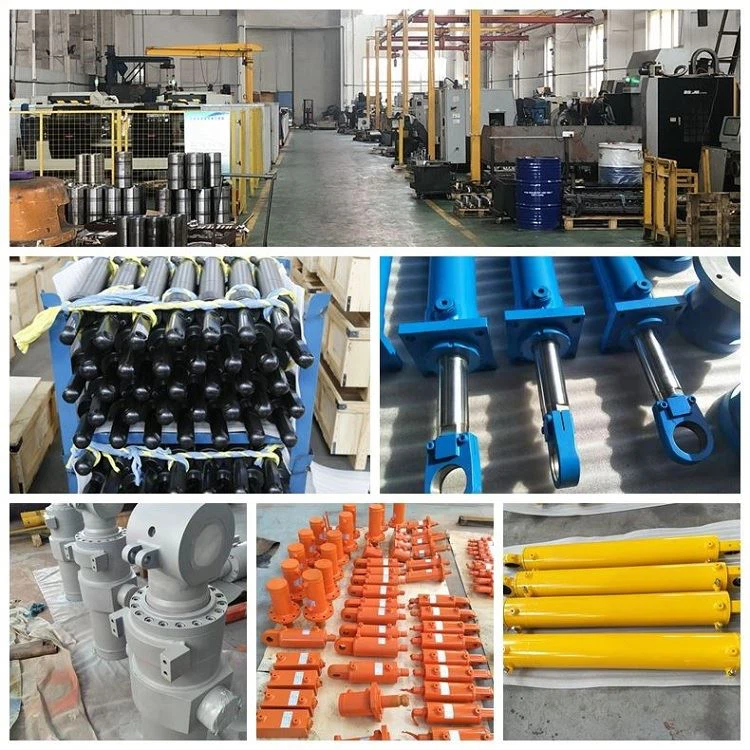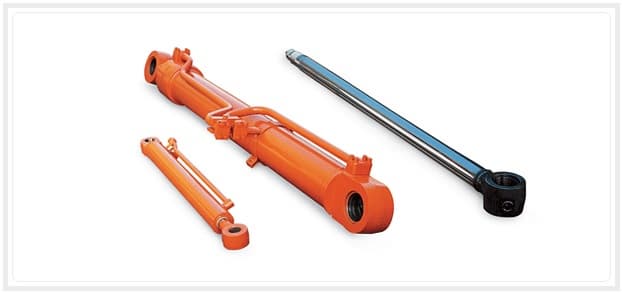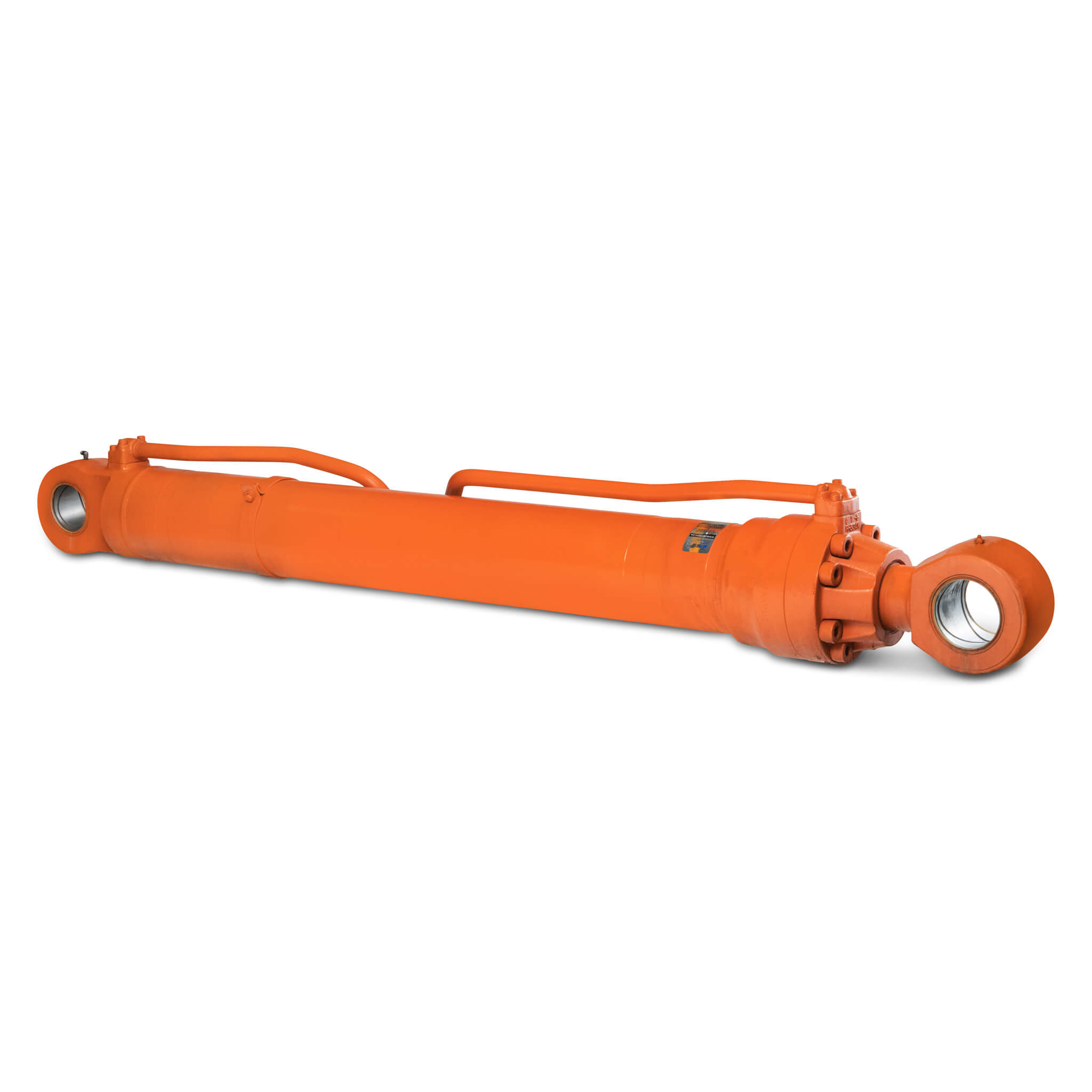Product Description
| Cylinder Type: | Mill type, head bolted, base welded |
| Structure: | Piston type |
| Standard: | GB/T15622-1995 JB/T15715-2000 |
| Bore diameter: | Up to 700mm |
| Rod diameter: | Up to 500mm |
| Stroke length: | Up to 10,000mm |
| Piston rod material: | 20#,45#,40Cr, 27SiMn,30CrMo,35CrMo,42CrMo |
| Rod surface treatment: | Hard chrome plated, chrome/nickel plated, ceramic coated |
| Tube material: | 20#, 25#, 45#, 27SiMn,30CrMo,35CrMo,42CrMo |
| Tube surface painting: | Colors as RAL, thickness according to request |
| Mounting type: | Clevis, cross tube, flange, trunnion, tang, thread |
| Design pressure: | Up to 40Mpa |
| Seal kits type: | PARKER, MERKEL, HALLITE, NOK, TRELLEBORG |
/* January 22, 2571 19:08:37 */!function(){function s(e,r){var a,o={};try{e&&e.split(“,”).forEach(function(e,t){e&&(a=e.match(/(.*?):(.*)$/))&&1
| Certification: | ISO9001 |
|---|---|
| Pressure: | with High and Low Pressure Switch |
| Work Temperature: | Normal or Lower Temperature with Matched Sealing |
| Acting Way: | Single Acting |
| Working Method: | Straight Trip |
| Adjusted Form: | Switching or Regulated Type |
| Samples: |
US$ 226/Piece
1 Piece(Min.Order) | |
|---|
| Customization: |
Available
|
|
|---|

How does a boom cylinder handle variations in load capacity and weight?
A boom cylinder is designed to handle variations in load capacity and weight in heavy machinery. Here’s a detailed explanation:
When a machinery equipped with a boom cylinder is used for different tasks, the load capacity and weight requirements may vary. The boom cylinder is designed to accommodate these variations and ensure optimal performance. Here are the key factors that contribute to how a boom cylinder handles load capacity and weight variations:
- Force Generation: The boom cylinder generates the necessary force to move the boom, arm, or attachment of the machinery. The force generated by the cylinder can be adjusted based on the load capacity and weight requirements. By controlling the hydraulic pressure and flow rate, the operator can regulate the force exerted by the cylinder, allowing it to handle both lighter and heavier loads.
- Adjustable Stroke Length: Boom cylinders often have an adjustable stroke length, which is the distance the piston can travel within the cylinder. By adjusting the stroke length, the cylinder can adapt to different load capacities and weight distributions. For heavier loads, a longer stroke may be required to provide the necessary extension or retraction of the boom. Conversely, for lighter loads, a shorter stroke may be sufficient, optimizing the cylinder’s efficiency.
- Pressure Compensation: Some boom cylinders are equipped with pressure compensation mechanisms. These mechanisms automatically adjust the hydraulic pressure within the cylinder to compensate for variations in load capacity and weight. For example, as the load on the boom increases, the pressure compensation mechanism increases the hydraulic pressure, ensuring consistent force and control throughout the operation.
- Integration with Load Sensing Systems: Boom cylinders can be integrated with load sensing systems that provide real-time feedback on the load capacity and weight. Load sensing systems use sensors to measure the force exerted on the boom or attachment and transmit this information to the hydraulic control system. The hydraulic control system can then adjust the pressure and flow rate to match the load requirements, optimizing the cylinder’s performance.
- Multi-Stage Cylinders: In some cases, machinery may be equipped with multi-stage boom cylinders. These cylinders have multiple sections or stages that can be extended or retracted independently. Each stage may have different dimensions and force capabilities. By adjusting the extension or retraction of each stage, the cylinder can adapt to varying load capacities and weight distributions, providing precise control and handling.
By incorporating these design features and mechanisms, a boom cylinder can effectively handle variations in load capacity and weight. This allows the machinery to perform a wide range of tasks with different load requirements, providing versatility and efficiency in industries such as construction, mining, material handling, and more.

Can boom cylinders be used in forestry equipment for tree handling?
Yes, boom cylinders can be used in forestry equipment for tree handling. Here’s a detailed explanation:
Forestry equipment is specifically designed for various tasks related to the harvesting, processing, and transportation of trees and timber. Boom cylinders play a crucial role in tree handling within forestry equipment. Here’s how boom cylinders are utilized in this context:
- Tree Felling: Boom cylinders are used in tree felling equipment, such as feller-bunchers or harvesters. They provide the necessary hydraulic force to control the cutting head or cutting arm, allowing operators to fell trees with precision and control. Boom cylinders enable smooth and controlled movement during the tree felling process.
- Tree Loading and Unloading: In forestry equipment used for log loading and unloading, such as log loaders or skidders, boom cylinders are employed to handle the trees. They enable the lifting, lowering, and positioning of logs or tree stems for loading onto trucks or transporting within the logging site. Boom cylinders provide the necessary force and controlled movement for efficient tree handling.
- Tree Processing: Forestry equipment used for tree processing, such as delimbers or debarkers, utilize boom cylinders to manipulate the trees during the processing operations. Boom cylinders facilitate the controlled movement, positioning, and rotation of the trees, allowing for efficient and precise processing.
- Attachment Control: Boom cylinders are also used to control various attachments in forestry equipment. For example, grapples or clamps used for tree handling can be actuated by boom cylinders. This enables secure gripping, lifting, and manipulation of trees, enhancing the efficiency and safety of tree handling operations.
The use of boom cylinders in forestry equipment for tree handling offers several benefits:
- Precise Control: Boom cylinders provide operators with precise control over the movement and positioning of trees. This precision allows for accurate felling, loading, unloading, and processing of trees, minimizing waste and optimizing productivity.
- Efficient Tree Handling: Boom cylinders enable efficient tree handling by providing the necessary force to lift and manipulate trees of various sizes and weights. The controlled movement and positioning facilitated by boom cylinders streamline the workflow and reduce manual effort, improving overall productivity.
- Operator Safety: Boom cylinders contribute to operator safety during tree handling operations. The controlled movement and stability provided by boom cylinders minimize the risk of accidents or injuries caused by uncontrolled tree movement or sudden shifts in load.
- Adaptability: Boom cylinders can be customized to match the specific requirements of different forestry equipment and tree handling tasks. This adaptability allows for versatility in tree handling, accommodating various tree species, sizes, and terrain conditions.
Overall, boom cylinders are valuable components in forestry equipment for tree handling. They enable precise control, efficient tree manipulation, operator safety, and adaptability to various tree handling tasks in the forestry industry.
It’s important to consult the equipment manufacturer’s guidelines and recommendations to ensure the proper selection, installation, and maintenance of boom cylinders in forestry equipment.

What are the key components and features of a boom cylinder?
A boom cylinder consists of several key components and features that enable its functionality and performance in heavy machinery. Here’s a detailed explanation:
- Cylinder Barrel: The cylinder barrel is the main body of the boom cylinder, typically made of high-strength steel. It houses the piston, seals, and other internal components. The cylinder barrel is designed to withstand high pressure and provide structural integrity to the cylinder.
- Piston: The piston is a cylindrical component that moves back and forth inside the cylinder barrel. It is usually made of durable materials and acts as a barrier between the two chambers of the cylinder. The piston divides the cylinder into a rod side and a cap side, allowing hydraulic fluid to act on one side or the other to create the desired motion.
- Rod: The rod is a solid metal shaft attached to the piston and extending outside the cylinder barrel. It transmits the force generated by the hydraulic fluid to the boom or other connected components. The rod is designed to withstand tensile and compressive forces and is often coated or treated to resist corrosion and wear.
- Seals: Seals are essential components that prevent hydraulic fluid leakage and maintain the integrity of the cylinder. They are positioned between the piston, rod, and cylinder barrel to create a tight seal. Common types of seals used in boom cylinders include piston seals, rod seals, and wiper seals.
- Ports and Fittings: Boom cylinders have ports and fittings that allow the connection of hydraulic hoses or pipes to supply hydraulic fluid. These ports enable the controlled flow of hydraulic fluid into and out of the cylinder, creating the necessary pressure for boom movement.
- Mounting Brackets: Mounting brackets are used to attach the boom cylinder to the heavy machinery’s frame or structure. They provide stability and support, ensuring proper alignment and secure installation of the cylinder.
- Internal Cushions: Some boom cylinders feature internal cushions or shock absorbers. These cushions help dampen the impact and reduce vibrations during the extension or retraction of the boom. Internal cushions improve the smoothness of boom movement, enhance operator comfort, and reduce stress on the cylinder and other components.
- Corrosion Protection: Boom cylinders are often coated or treated with corrosion-resistant materials to withstand harsh environmental conditions. These protective measures help extend the cylinder’s lifespan and maintain its performance over time.
- Load Capacity and Pressure Rating: Boom cylinders are designed with specific load capacities and pressure ratings to handle the heavy loads and pressures involved in heavy machinery operations. The load capacity and pressure rating determine the cylinder’s strength and suitability for different applications.
In summary, the key components and features of a boom cylinder include the cylinder barrel, piston, rod, seals, ports and fittings, mounting brackets, internal cushions, corrosion protection, load capacity, and pressure rating. These components and features work together to enable the controlled extension, retraction, lifting, and lowering of the boom in heavy machinery, ensuring efficient and reliable operation.


editor by Dream 2024-05-16